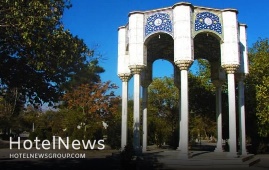
Ibn Babawayh is a vast historical cemetery located in Rey, southern Tehran, in which many Iranian figures have been laid to rest. It is named after Ibn Babawayh who was an Islamic theologian and the author of one of the “Four Books” that are the basic authorities for the doctrine of Twelver Shi’ism. Also called Sheikh Saduq, Ibn Babawayh, whose full name is given as Abu Jafar Muhammad ibn Abu al-Hasan Ali ibn Husayn ibn Musa al-Qummi, was born in c. 923 CE, Khorasan, northeast Iran, and he died in Ray in 991. Originally built during the reign of Samanids (819-999), the cemetery has been ruined many times, and for various reasons, such as the Mongol invasion (1219-1221 CE), several civil wars, and also natural disasters. There is an interesting story behind the construction of the current cemetery which occurred during the Qajar era. Once, as Haj Mohammad Baqer Khansari writes in Rozat al-Janat, heavy rain destroyed and made a hole in the old cemetery. Workers went to repair the destruction, but they found an intact corpse and an inscription in the cellar of the mausoleum. Based on the inscription, the mausoleum was built 800 years ago. By the way, the news of finding an intact corpse in the mausoleum of Sheikh Saduq reached the court and the king sent an envoy to the site to confirm the truth of the story. His current tomb consists of a groin stone vault with eight pillars decorated with beige and blue tiles and is the site of pilgrimage for the Muslims. In addition, the atmospheric cemetery built around the tomb of Sheikh Saduq is one of the most revered graveyards in the ancient town of Rey. Wandering around the cemetery, you come across the graves of famous Iranian figures like Gholam-Reza Takhti, the popular Olympic gold medalist wrestler, Ali-Akbar Dehkhoda, the well-known linguist, poet, and scholar, Hossein Behzad, the eminent miniaturist, Jalal Al-e Ahmad, the contemporary writer, and many others. There used to be many private family mausoleums featuring beautiful historical buildings in Ibn Babawayh, many of which are destroyed now due to urban development projects. Rey was one of the capital cities of the Parthian empire (3rd century BC–3rd century CE) and it was captured by the Muslim Arabs in 641 CE. During the reign of the Muslim caliph al-Mahdi in the 8th century, the city grew in importance until it was rivaled in western Asia only by Damascus and Baghdad. According to Britannica, Islamic writers described it as a city of extraordinary beauty, built largely of fired brick and brilliantly ornamented with blue faience (glazed earthenware). It continued to be an important city and was briefly a capital under the rule of the Seljuqs, but in the 12th century, it was weakened by the fierce quarrels of rival religious sects. In 1220 the city was almost destroyed by the Mongols, and its inhabitants were massacred. Most of the survivors of the massacre moved to nearby Tehran, and the deserted remnants of Rey soon fell into complete ruin.
Create: Oct 25, 2021 Edit: Oct 25, 2021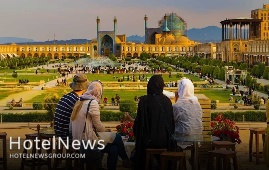
Iran's tourism industry has made every effort to stand on its own two feet despite the considerable damage caused by the virus pandemic. A country’s prosperity depends on its economic and social development, and the tourism industry plays a key role in achieving this goal, the president of Iran’s University of Science and Culture Seyyed Saied Hashemi has said. He made the remarks during the two-day symposium of One Hundred Years of Iranian Tourism, which came to an end on Wednesday. After the coronavirus crises, tourism can hopefully be a positive influence on people’s lives, he added. Many nations owe their social and economic progress to [their] tourism [industries], so it is hoped that this symposium and such events can provide a meaningful solution for the new [Iranian] government, he noted. Due to the lack of adequate coordination and cooperation between scientific institutions on the one hand and policy-makers on the other hand, the country may have faced many problems in the tourism industry during this century, and that is why it could not get enough benefit from the tourism despite having good potential, he mentioned. Another speaker at the event, Mohammad Hossein Imani Khoshkhu, the head of the industrial park for science also said there is no connection between tourism sectors in the country, while all organizations and devices must help each other to develop tourism. For instance, currently, medical tourism does not exist in the country, but there are international patients and the medical tourism activists have now become taxi drivers at airports instead of activists for related tourism, he added. Back in July, ISNA reported that Iran’s tourism industry has suffered a loss of some 320 trillion rials ($7.6 billion at the official exchange rate of 42,000 rials per dollar) since the outbreak of the coronavirus pandemic. The pandemic has also ruined more than 44,000 jobs in the once budding travel sector of the country, the report added. As a result of the outbreak of the coronavirus in Iran and the subsequent unemployment and financial losses, accommodation centers suffered the most. These statistics cover the period between February 2020 and the spring of 2021. Only months into the outbreak, Zarghami’s predecessor, Ali Asghar Mounesan, lamented that the number of foreign travelers to Iran was drastically plunged due to the pandemic. “Tourism of the country was growing before the corona [outbreak], its revenues reached $11.7 billion in 2019, which accounted for 2.8% of GDP, nearing the average share of tourism in the world GDP, which was 3.2 percent,” Mounesan said. He added 8.7 million foreign nationals visited Iran during the [Iranian] year (1398), adding that Iran was ranked as the second fastest-growing country in tourism based on data compiled by the World Tourism Organization. So far, panels of travel experts have mapped out new marketing strategies hoping the sector would get back on its feet once again. Earlier this year, the Head of the Iranian Tour Operators Association Ebrahim Pourfaraj asked the government to issue tourist visas for the international applicants who have been fully vaccinated against COVID-19. “The Ministry of Health and the National Headquarters for Coronavirus Control can at least agree that the international tourists who have received the [second dose of] coronavirus vaccine would be allowed to enter Iran.” The expert lamented that the continuation of such a trend would result in losing international tourist markets more than before. “Or at least they should make it clear so that we can respond appropriately to foreign companies and tourists to not to miss the international tourist markets more than before.” Iran is potentially a booming destination for travelers seeking cultural attractions, breathtaking sceneries, and numerous UNESCO-registered sites. Under the 2025 Tourism Vision Plan, Iran aims to increase the number of tourist arrivals from 4.8 million in 2014 to 20 million in 2025. Even before the pandemic, Iran’s tourism was already grappling with some challenges, on top of those Western “media propaganda” aimed at scaring potential travelers away from the Islamic Republic. Some experts believe Iran is still somehow “unknown” for many potential travelers due to such a “media war”. They, however, consider bright prospects for the tourism sector of the country if it vigorously pursues comprehensive strategies to counter U.S.-led propaganda and strict sanctions, yet does its best to loosen tough travel regulations.
Create: Oct 25, 2021 Edit: Oct 25, 2021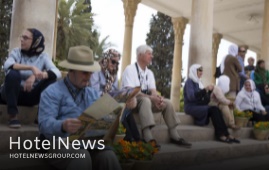
Iranian officials have announced new rules for foreign tourists interested in visiting the country, CHTN reported on Monday. As of October 23, direct and indirect entry and exit of nationals of Iran and other countries (both groups and individuals) from/to air and land borders are no longer restricted by presenting a valid vaccination card and following protocols approved by the Ministry of Health, the report added. A health certificate with a negative coronavirus PCR test result, issued at most 96 hours before arrival, is required for travelers. Direct or indirect travel from/to high-risk countries designated by the World Health Organization is excluded from this regulation. The Ministry of Health will announce the level of restrictions or bans on travels if disease processes in neighboring countries change. The Ministry of Tourism is responsible for monitoring the implementation of this instruction, and if any violations are observed, the authorities will be notified. Earlier this week, the deputy tourism minister Ali-Asghar Shalbafian announced that the National Headquarters for Coronavirus Control agreed to reopen the country’s borders to foreign tourists, based on the new conditions prevailing in the country after crossing the fifth wave of the pandemic, increasing vaccinations, and at the request of the tourism ministry. As a condition for entry into the country, the headquarters has instructed all tourists and the host communities to follow all health protocols, the official added. As the post-coronavirus era emerges, extensive measures have been taken to revive the tourism industry, he noted. He also expressed hope that issuing tourist visas would result in an upsurge in tourism. Tourist visas Back in September, Cultural Heritage, Tourism and Handicrafts Minister Ezzatollah Zarghami announced that by the order of President Ebrahim Raisi the issuance of tourist visas and the flow of foreign tourists from land and air borders will be resumed from the month of Aban (Oct. 23 – Nov. 21) following 19 months of suspension. Months of steep recession has taken its toll. Many travel insiders, hoteliers, and tour operators have faced big dilemmas such as bankruptcy, unemployment, debts, and the prospects of not being competitive on the international level. They now have good grounds of hope as Zarghami announced on September 19 that the country plans to lift visa restrictions to help the severely hit tourism industry. Meanwhile, the number of people testing positive for COVID-19 has continued to fall in the Islamic Republic, curbing a stubborn fifth wave of the pandemic, which has seen daily mortalities of up to 700 in recent weeks. As of September 22, the figure dropped to below 300 as the government has devoted a great deal of effort to vaccinate citizens against the nasty virus. Some experts believe Iran is still somehow “unknown” for many potential travelers due to Western “media war”. Several estimates have been released so far on the extent of the tourism-related losses incurred by the pandemic. Only months into the outbreak, Zarghami’s predecessor, Ali-Asghar Mounesan, lamented that the number of foreign travelers to Iran was drastically plunged due to the pandemic. “Tourism of the country was growing before the corona [outbreak], its revenues reached $11.7 billion in 2019, which accounted for 2.8% of GDP, nearing the average share of tourism in the world GDP, which was 3.2 percent,” Mounesan said. He added 8.7 million foreign nationals visited Iran during the [Iranian] year (1398), adding that Iran was ranked as the second fastest-growing country in tourism based on data compiled by the World Tourism Organization. Iran is potentially a booming destination for travelers seeking cultural attractions, breathtaking sceneries, and numerous UNESCO-registered sites. Under the 2025 Tourism Vision Plan, Iran aims to increase the number of tourist arrivals from 4.8 million in 2014 to 20 million in 2025.
Create: Oct 25, 2021 Edit: Oct 27, 2021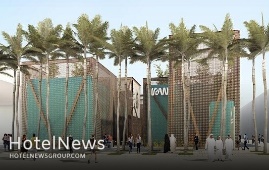
According to the Hotel News, The Association of Iranian Travel Agencies has invited domestic travel businesses to attend Iran pavilion at Expo 2020 Dubai, which is currently underway in UAE. Association of Iranian Travel Agencies Director Hormatollah Rafiei has called on [eligible] travel agencies to grasp “this golden opportunity” by attending the event in a space provided to tourism activists for free, Mehr reported on Tuesday. Visitors to the pavilion are offered to discover epitomes of the ancient land in terms of rituals, handicrafts, cultural heritage, and travel destinations. It also reveals more about medical tourism, novel startups, and off-the-beaten tracks. Many countries and companies are also looking to the expo - the first major global event open to visitors since the coronavirus pandemic - to boost trade and investment. According to organizers, the Expo, an exhibition of culture, technology, and architecture under the banner “Connecting Minds and Creating the Future”, is expected to be a demonstration of ingenuity, and a place where global challenges such as climate change, conflict, and economic growth can be addressed together. The Persian Gulf state has relaxed most coronavirus limitations but Expo requires face masks to be worn and for visitors over 18 to be vaccinated against, or test negative for, COVID-19. Iran expects to reap a bonanza from its numerous tourist spots such as bazaars, museums, mosques, bridges, bathhouses, madrasas, mausoleums, churches, towers, and mansions, of which 26 are inscribed on the UNESCO World Heritage list.
Create: Oct 20, 2021 Edit: Oct 20, 2021
Over 11,000 job opportunities are estimated to be generated by implementing 245 tourism-related projects across the northeastern Khorasan Razavi province, the deputy provincial tourism chief has announced. Upon the completion of the ongoing projects that have been underway for about ten years, a total of 11,500 jobs will be provided for the locals, CHTN quoted Ahmad Dinari as saying on Sunday. Some 500 trillion rials (about $12 billion at the official exchange rate of 42,000 rials per dollar) have been invested in the mentioned projects so far, the official added. The projects include hotels, apartment hotels, guesthouses, travel complexes, recreational centers, and villages specifically developed for health tourism, he noted. He also noted that foreign investment in the tourism sector of the province amounted to $90 million last year. Mashhad, the capital of Khorasan Razavi province, is Iran’s holiest and second-largest city. Its raison d’être and main sight is the striking massive shrine complex of Imam Reza (AS), the eighth Shia Imam Dozens of five-star hotels and hostels are dotted across Mashhad. The city has also the highest concentration of water parks in the country, and it also embraces a variety of cultural and historical sites that are generally crowded. The metropolis is also a good place to buy top handwoven rugs and carpets, and it’s a staging post for travel to Turkmenistan, Afghanistan, and little-touristic Khorasan regions. Before the coronavirus puts almost everything on lockdown, Mashhad, played host to thousands of travelers and pilgrims who come from various Iranian cities, neighboring countries, and even across the globe to visit the holy shrine. According to official statistics, some 37 million Iranian pilgrims and travelers visited the shrine city of Mashhad during the first ten months of the past Iranian calendar year 1398 (March 21, 2019- March 10, 2020). Of whom some eight million came by road, six million by rail, 3.8 million by air, and 18 million by private cars.
Create: Oct 19, 2021 Edit: Oct 19, 2021
Qeshm Island recorded over 2.8 million visitors during the first half of the current Iranian calendar year (started March 21). The official data provided by Qeshm’s Department of Ports and Maritime marked a 20 percent increase in tourism flow compared to the same period year on year, IRNA reported. “In the first half of this year, 2,820,229 people traveled to Qeshm, which shows a 20% growth compared to the same period the last year,” Ali Ashtari, who presides over the department, said on Saturday. The island is a heaven for eco-tourists as it embraces wide-ranging attractions such as the Hara marine forests and about 60 villages dotted mostly across its rocky coastlines. It also features geologically eye-catching canyons, hills, caves, and valleys, most of which are protected as part of the UNESCO-tagged Qeshm Island Geopark, itself a haven for nature-lovers. Many travelers to Qeshm believe that the Stars Valley or Valley of Stars is a “MUST SEE”. It is home to bizarre-shaped gorges, tall pillars, canyon-like paths, hollowed-out spaces as well as the smooth and round stones, which have been formed by the wind and rain eroding the soil, rocks, and stones. Locals believe that a star once fell on this area thereby creating the rocky shapes that make it seem as if from another planet.
Create: Oct 19, 2021 Edit: Oct 19, 2021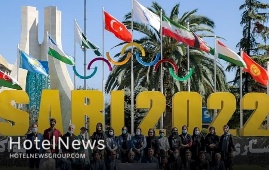
The northern province of Mazandaran has considerable potential to attract vacationers from around the world and become an international tourist destination. Having a wide range of capacities and potentials, Mazandaran, which is a top destination for domestic travelers, can be turned into a destination for foreign travelers as well through careful planning, the provincial tourism chief has announced. Given that the provincial capital of Sari has been selected to be the cultural capital of the Economic Cooperation Organization (ECO) in 2022, there is the possibility of promoting it as a tourist destination internationally, Seifollah Farzaneh said on Sunday. Boosting the province’s tourism infrastructure, however, requires more funding, the official added. Earlier this month, local tourism officials announced that 214 tourism-related projects were underway in the lush green province estimated to generate more than 14,000 jobs upon their completion. Some 186 trillion rials ($4.4 billion at the official exchange rate of 42,000 rials per dollar) have been invested in the ongoing projects so far. The developments will also add over 15,000 beds to the hospitality sector of the province. In Mazandaran province, one of Iran’s most popular domestic vacation spots, serious damage was sustained from the coronavirus outbreak, and tourism facilities in the province went through a significant economic recession. However, the Iranian government has paid 343 billion rials ($8.1 million) in loans to the tourism businesses affected by the pandemic in the province so far. Last November, Mehran Hassani, the deputy provincial tourism chief announced that the province’s tourism industry has taken six trillion rials (about $143 million) hit from the impact of coronavirus (COVID-19) over the previous months. He also noted that there are 4,000 active tourism units across the province, generating jobs for about 16,000 people directly. Sandwiched between the towering Alborz mountain range and the Caspian Sea, Mazandaran has a rich yet turbulent history. An early civilization flourished at the beginning of the first millennium BC in Mazandaran (Tabarestan). Its insecure eastern and southeastern borders were crossed by Mongol invaders in the 13th and 14th centuries. Cossacks attacked the region in 1668 but were repulsed. It was ceded to the Russian Empire by a treaty in 1723, but the Russians were never secure in their occupation. The area was restored to Iran under the Qajar dynasty. The northern section of the region consists of lowland alongside the Caspian and upland along the northern slopes of the Alborz Mountains. Marshy backlands dominate the coastal plain, and extensive gravel fans fringe the mountains. The climate is permanently subtropical and humid, with very hot summers.
Create: Oct 19, 2021 Edit: Oct 19, 2021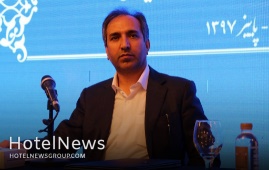
Iranian hotels are ready to receive foreign tourists as the issuance of tourist visas and the flow of foreign tourists from land and air borders will be resumed this month. Ninety percent of the hotel staff have been vaccinated against the coronavirus so far, so the hotels are ready to welcome foreign tourists, observing strict health protocols, the head of the Association of Iranian Hoteliers has announced. To ease the travel process, individual foreign tourists could confirm the reservations of accommodation centers at the border, CHTN quoted Jamshid Hamzehzadeh as saying on Monday. The destinations of foreign tourists in Iran are to specific cities such as Mashhad, Qom, Tabriz, Shiraz, Yazd, and Isfahan, and to return to the figure of over eight million incoming tourists before the outbreak of the coronavirus, serious planning is required, the official added. Iraqi tourists will flood the country once the borders open, but attracting tourists from Europe will require some time, he noted. Foreign advertising in foreign media and press, on the internet, and through well-known international bloggers should also be planned and taken seriously, he mentioned. Earlier this month, the official noted that Iranian hotels have lost 202 trillion rials (some $4.8 billion at the official exchange rate of 42,000 rials per dollar) of potential revenues due to the COVID-19 pandemic. Two-thirds of the hotel staff have lost their jobs as well, he added. Back in September, Hamzehzadeh announced that all employees of accommodation centers across Iran are scheduled to be vaccinated against the coronavirus. “To vaccinate staffs of all accommodation centers, including eco-lodges, apartment hotels, and guest houses, as well as hotels, more coordination with the Ministry of Health is needed,” he added. Back in July, ISNA reported that the tourism industry of the country has suffered a loss of some 320 trillion rials ($7.6 billion at the official exchange rate of 42,000 rials per dollar) since the outbreak of the coronavirus pandemic. The pandemic has also ruined more than 44,000 jobs in a once budding travel sector of the country, the report added. Experts believe accommodation centers suffered the most as a result of the outbreak of the coronavirus in Iran and its subsequent unemployment and financial losses. Iran plans to resume issuing tourist visas Back in September, Cultural Heritage, Tourism and Handicrafts Minister Ezzatollah Zarghami announced that by the order of President Ebrahim Raisi the issuance of tourist visas and the flow of foreign tourists from land and air borders will be resumed from the month of Aban (Oct. 23 – Nov. 21) following 19 months of suspension. Months of steep recession has taken its toll. Many travel insiders, hoteliers, and tour operators have faced big dilemmas such as bankruptcy, unemployment, debts, and the prospects of not being competitive on the international level. They now have good grounds of hope as Zarghami announced on September 19 that the country plans to lift visa restrictions to help the severely hit tourism industry. Meanwhile, the number of people testing positive for COVID-19 has continued to fall in the Islamic Republic, curbing a stubborn fifth wave of the pandemic, which has seen daily mortalities of up to 700 in recent weeks. As of September 22, the figure dropped to below 300 as the government has devoted a great deal of effort to vaccinate citizens against the nasty virus. Some experts believe Iran is still somehow “unknown” for many potential travelers due to Western “media war”. Several estimates have been released so far on the extent of the tourism-related losses incurred by the pandemic. Only months into the outbreak, Zarghami’s predecessor, Ali Asghar Mounesan, lamented that the number of foreign travelers to Iran was drastically plunged due to the pandemic. “Tourism of the country was growing before the corona [outbreak], its revenues reached $11.7 billion in 2019, which accounted for 2.8% of GDP, nearing the average share of tourism in the world GDP, which was 3.2 percent,” Mounesan said. He added 8.7 million foreign nationals visited Iran during the [Iranian] year (1398), adding that Iran was ranked as the second fastest-growing country in tourism based on data compiled by the World Tourism Organization. Iran is potentially a booming destination for travelers seeking cultural attractions, breathtaking sceneries, and numerous UNESCO-registered sites. Under the 2025 Tourism Vision Plan, Iran aims to increase the number of tourist arrivals from 4.8 million in 2014 to 20 million in 2025.
Create: Oct 18, 2021 Edit: Oct 19, 2021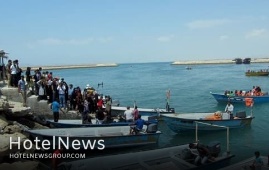
Bushehr province should invest a great deal of effort to develop its maritime tourism, the deputy tourism minister Ali-Asghar Shalbafian has said. TEHRAN - Busher province should invest a great deal of effort to develop its maritime tourism, the deputy tourism minister Ali-Asghar Shalbafian has said. “If the southwestern Bushehr province wants to develop tourism, it should focus on maritime sector,” the official said on Thursday. “The province needs to inform investors about its capacity in this sector, especially its favorable location on the Persian Gulf coast.” He made the remarks during a meeting with the provincial tourism chief Mohammad Hossein Arastuzadeh. The coastal region, ports, islands and coasts of the Persian Gulf are among Bushehr's greatest natural gifts, therefore, directing the investment capacities and enthusiastic investors to the maritime tourism sector will facilitate the growth of Bushehr as a coastal tourist destination, Shalbafian explained. For his part Arastuzadeh said that by using cruise ships and traditional Lenj boats in the region, maritime tourism has grown. Over the past couple of years, the Islamic Republic has made various efforts to exploit maritime tourism potential by developing hospitality infrastructures, diversifying sea routes, and drawing private sector investors along its vast southern coasts. Prosperous maritime tourism could help the county to meet its ambitious target of attracting 20 million annual tourists by 2025. It also keeps an eye on tourism developments in the Caspian Sea in the north. Back in February, the Ministry of Tourism and the Ministry of Transport and Urban Development signed a memorandum of understanding (MOU) to develop maritime tourism and make the best use of its potential in the southern and northern coasts of the country. Promoting the culture of using the sea as a tool to increase social vitality, development of coastal activities in the form of environmentally-friendly plans and programs, and creating the necessary grounds for cooperation and exchange of knowledge and information were also among the topics of the agreement. With over 6,000 years of history and significant monuments from the Elamite, Achaemenid, Parthian, and Sassanid eras, Bushehr is one of Iran’s most important historical centers. Besides its cultural heritage, beautiful beaches and lush palm groves make it an attractive destination for world travelers. The historical and architectural monuments of Bushehr include Islamic buildings like mosques and praying centers, mansions, old towers, castles, as well as gardens. When it comes to cultural attractions, there are many historical mounds in Bushehr including Tall-e Khandaq with Sassanid architectural style, Tall-e Marv located near an Achaemenid Palace, and Qajar era Malek al-Tojar Mansion. Qajar era Kazeruni Mansion, which has been inscribed on the World Heritage List, is another attraction that world travelers love to see among various ancient sites.
Create: Oct 16, 2021 Edit: Oct 16, 2021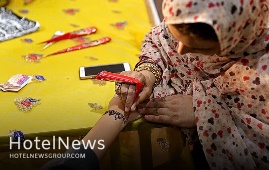
Clusters of tourism insiders, artisans, and artists who are natives of Qeshm will stage cultural nights in Tehran to put the spotlight on the southern Iranian island. Residents of Tehran will be exposed to the local culture, traditions, handicrafts, and tourist destinations of Qeshm during the three-day festival, which starts on Oct. 20, a local cultural official has announced. A group of 15 artists from Qeshm will participate in the event as ambassadors of Qeshm’s culture, art, and literature, Hamed Biazar said on Friday. One of the programs of Qeshm cultural nights will be the display of some 20 photos of the beauties of the Island, taken by some professional local photographers, he added. One of the main objectives of the event is to provide people with an overview of Qeshm Island, including tourist information on sightseeing sites, accommodations, and hotels, he noted. Sales exhibits and workshops on indigenous handicrafts, souvenirs, garments, as well as live performances of traditional music are also parts of the event, he mentioned. He also expressed hope that holding such events will allow Qeshm to be promoted as a tourist destination once the coronavirus crisis is over. Qeshm Island is a heaven for eco-tourists as it embraces wide-ranging attractions such as the Hara marine forests and about 60 villages dotted mostly across its rocky coastlines. The island also features geologically eye-catching canyons, hills, caves, and valleys, most of which are protected as part of the UNESCO-tagged Qeshm Island Geopark, itself a haven for nature-lovers. Many travelers to Qeshm believe that the Stars Valley or Valley of Stars is a “MUST SEE”. It is home to bizarre-shaped gorges, tall pillars, canyon-like paths, hollowed-out spaces as well as the smooth and round stones, which have been formed by the wind and rain eroding the soil, rocks, and stones. Locals believe that a star once fell on this area thereby creating the rocky shapes that make it seem as if from another planet.
Create: Oct 16, 2021 Edit: Oct 16, 2021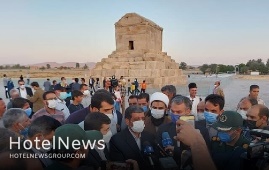
The UNESCO-registered Pasargadae is a symbol of human civilization in ancient Iran, tourism minister Ezzatollah Zarghami has announced.There is no doubt that Pasargadae belongs to Cyrus the Great, who is regarded as a legend in the world, whether or not he was buried here, it is important to respect him as an Iranian, the minister said on Thursday. He made the remarks during a visit to the majestic World Heritage site, which is situated in the southern Fars province. “Pasargadae stands out for its uniqueness on the international stage, if not as a special place, but as a symbol of civil and human development,” he noted. The tourism status of Pasargadae was among issues discussed with President Ebrahim Raisi during his current visit to Fars…., and funds have been considered for it, the minister added. He also noted that the majority of funds will be allocated to develop infrastructure and facilities, and making repairs for the public benefit, he said. There has already been an allocation of 200 billion rials ($4.7 million at the official exchange rate of 42,000 rials per dollar) to the historical site, he mentioned. Situated about 50 km north of Persepolis, Pasargadae embraces outstanding examples of the first phase of royal Achaemenid art and architecture and exceptional testimonies of Persian civilization. Cyrus was the founder of the Achaemenid Empire which at its greatest extent stretched from the Balkans to the Indus Valley, spanning 5.5 million square kilometers. The Persian king declared the world’s first charter of human rights, also known as the Cyrus Cylinder. Despite the minimal nature of the ruins, they make a good introduction to the wonders of Persepolis, some 60km to the south. Best visited en route from Yazd or Isfahan to Shiraz, most people fit them into an extended tour from Persepolis with stops at Naqsh-e Rostam and Naqsh-e Rajab.
Create: Oct 16, 2021 Edit: Oct 16, 2021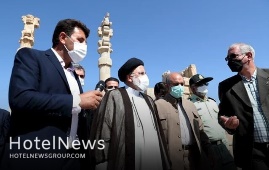
Iranian President Seyyed Ebrahim Raisi on Thursday said the UNESCO-registered Persepolis is an epitome of the great Persian art. Persepolis displays the great artistic achievements of Iranians from past millennia, which are still remarkable and admirable after so many centuries, the president said. He made the remarks during his visit to the prestigious site, which was once the ceremonial capital of the mighty Achaemenid Empire (c. 550 – 330 BC). [The ruins of] Persepolis is also conveying a message to oppressors warning them of the fate of those who are cruel to humanity, he added. The royal city of Persepolis ranks among the archaeological sites which have no equivalent, considering its unique architecture, urban planning, construction technology, and art. Persepolis, also known as Takht-e Jamshid, whose magnificent ruins rest at the foot of Kuh-e Rahmat (Mountain of Mercy) is situated 60 kilometers northeast of the city of Shiraz in Fars province. The city was burnt by Alexander the Great in 330 BC apparently as revenge to the Persians because it seems the Persian King Xerxes had burnt the Greek City of Athens around 150 years earlier. The city’s immense terrace was begun about 518 BC by Darius the Great, the Achaemenid Empire’s king. On this terrace, successive kings erected a series of architecturally stunning palatial buildings, among them the massive Apadana palace and the Throne Hall (“Hundred-Column Hall”). This 13-ha ensemble of majestic approaches, monumental stairways, throne rooms (Apadana), reception rooms, and dependencies is classified among the world’s greatest archaeological sites. Persepolis was the seat of the government of the Achaemenid Empire, though it was designed primarily to be a showplace and spectacular center for the receptions and festivals of the kings and their empire. The site is marked by a large terrace with its east side abutting the Kuh-e Rahmat (“Mount of Mercy”). The other three sides are formed by a retaining wall, varying in height with the slope of the ground from 13 to 41 feet (4 to 12 meters); on the west side, a magnificent double stair in two flights of 111 short stone steps leads to the top. On the terrace are the ruins of several colossal buildings, all constructed of a dark gray stone (often polished to a marble-like surface) from the adjacent mountain. According to Britannica, the stone was cut with the utmost precision into blocks of great size, which were laid without mortar; many of them are still in place. Especially striking are the huge columns, 13 of which still stand in the audience hall of Darius I (the Great; reigned 522–486 BC), known as the Apadana, the name given to a similar hall built by Darius at Susa. There are two more columns still standing in the entrance hall of the Gate of Xerxes, and a third has been assembled there from its broken pieces. In 1933 two sets of gold and silver plates recording in the three forms of cuneiform—ancient Persian, Elamite, and Babylonian—the boundaries of the Persian empire were discovered in the foundations of Darius’s hall of audience. Several inscriptions, cut in stone, of Darius I, Xerxes I, and Artaxerxes III indicate to which monarch the various buildings were attributed.
Create: Oct 16, 2021 Edit: Oct 16, 2021